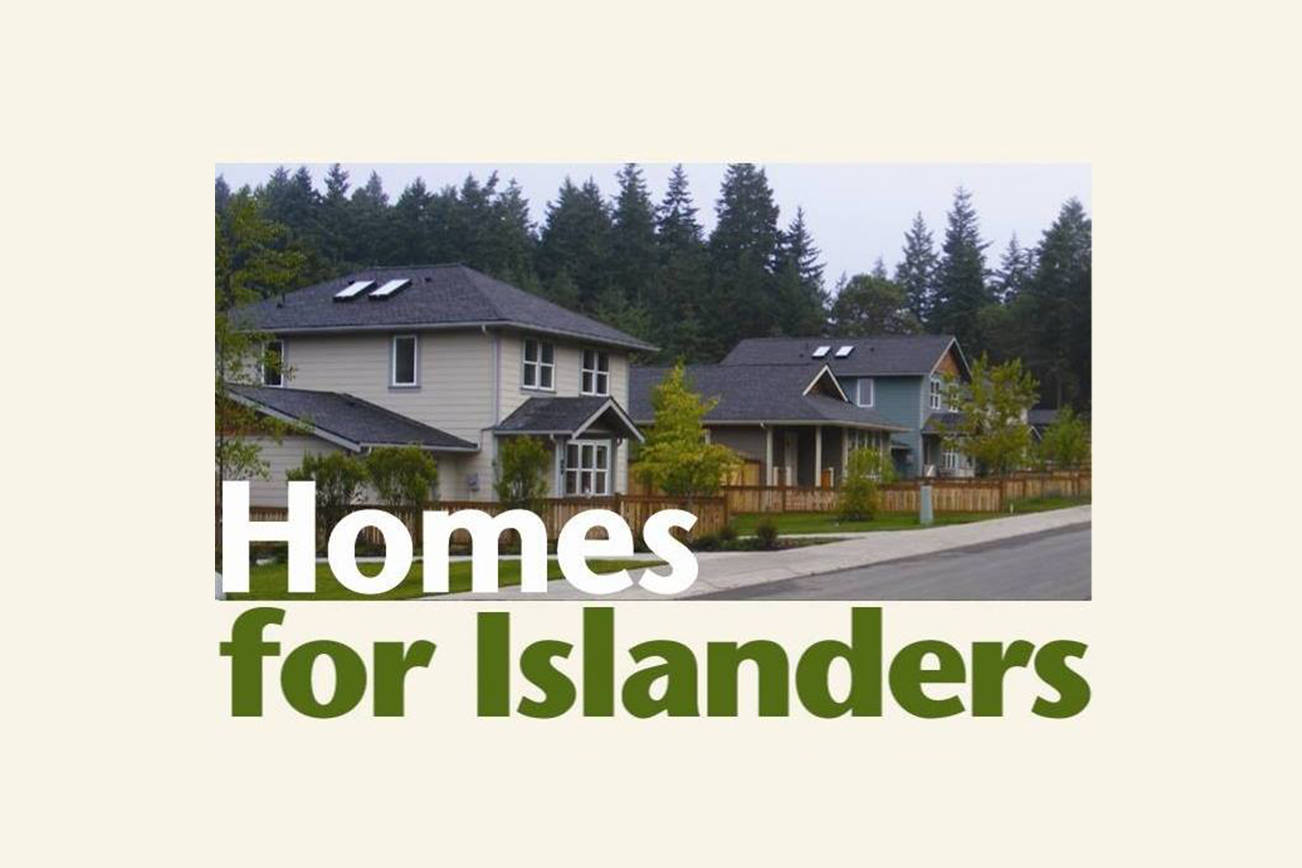By Heather Spaudling
Journal contributor
Affordable housing in San Juan County was dealt a blow when the nonprofit organization Homes for Islanders announced it was suspending operations once its Fox Hall project is completed.
“There just isn’t any land out there,” Bill Gendron, one of the Homes for Islanders founders said.
Gendron added that the group has been looking for a couple of years. Of two sites located in town Homes for Islanders considered, one was not available, the other was too expensive.
“Prices have skyrocketed,” Gendron said.
Without a site ready — and the fact it takes at least two years to plan, get funding from the U.S. Department of Agriculture, and complete Environmental Impact Statements — Gendron said the Homes for Islanders board decided to go into hibernation. The board hopes, however, that the break will be brief.
Homes for Islanders began 17 years ago in response to the county’s affordable housing crisis. The group adopted a sweat equity model, in which buyers help build their own homes.
“It’s a great model,” Gendron said, “People learn many skills from it, and have equity in the processes.”
Over those 17 years, Homes for Islanders has built a total of 129 homes in San Juan County, 115 on San Juan and 14 on Orcas. According to Gendron, there has been very little turnover in those houses.
“They have become very attached to their homes,” Gendron said. There have been a couple of recent sales, he added, because the real estate market has been so hot, but for the most part, those who built the homes have stayed in the homes.
Demand for affordable housing has increased through the recent real estate boom. Homes for Islanders has a waiting list and has continued to receive applicants since announcing a hold on construction.
“Given the lack of available housing in the County in general over the past years, it is hard to say demand has increased when it was already and continues to remain so high,” San Juan County Affordable Housing Coordinator Ryan Page said.
Page added that the current real estate market has made it increasingly clear that it unlikely an average working family in the count purchase their own home without significant outside financial support or subsidy from a nonprofit organization.
When asked if the finite land available in the islands was a concern in regards to affordable housing, Page said, “This issue is exasperated by the nature of living on an island, however, it is really a microcosm of development going on all around our country and world.”
Many communities are grappling with how to manage growth, Page continued, and a lack of available land that is suitable for development.
“As long as there are philanthropically minded islanders and organizations willing to work with the county or nonprofits developers, I believe there will be opportunities for affordable housing development,” Page added.
Islander problem solving has helped to combat the issue locally, he noted.
“Islanders have been coming up with creative solutions for affordable housing for at least 30 years and will continue to do so. Our task is difficult, but our community always rises to meet a challenge,” Page said.
One tool the county has in its pocket, Page added, is the Home Fund. This fund was implemented by island voters just over two years ago.
“The county plans to use our local source of affordable housing dollars the Home Fund to be opportunistic when suitable pieces of land are made available to hopefully provide those development opportunities and keep the housing developed on that land permanently affordable,” Page said.
When Page was asked if he was concerned about the impact on affordable housing with Homes for Islanders in hibernation, Page responded, “Yes, my hope is that the suspension of Home’s for Islanders operations is brief and that a solution will soon present itself so that Homes for Islanders can get back to doing what it does best.”
“Homes for Islanders has been hugely successful at providing affordable housing opportunities for individuals and families able to complete their self-help sweat equity model of house building,” he added. “The loss of Homes for Islanders would mean fewer options and opportunities for average islanders to own their own home in the future.”
Homes for Islanders is not permanently going away any time soon, however, according to Gendron. Gendron equates the situation to an animal going into hibernation while the nonprofit continues its search for the next project.
The ideal land, according to Gendron, would be at least a two-acre parcel in Friday Harbor, big enough for eight to 10 houses. Friday Harbor is preferable to county land because home-owners are closer to public services like schools, libraries, medical facilities as well as their own jobs, he noted.
“The USDA prefers our sites to be close to public services, but our applicants like it better as well,” Gendron said.
That being said, with the market what it is, if the nonprofit can find land in the county, they would work with it.
The parcel would need to be at least seven acres, and designated rural farm forest, Gendron said.
Until the land is found and construction begins again, Gendron said he believes there will be a higher demand for rental units, since most Homes for Islanders applicants are renters.
Economic impacts will also ripple out into the community beyond affordable housing, Gendron said. Homes for Islanders buys construction materials and services, works with OPALCO.
“We put a lot of our revenue back into the community,” Gendron said. “If anyone has land and want to do something for the community with it, Homes for Islanders would be interested.”



